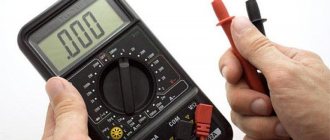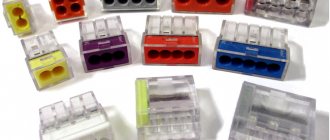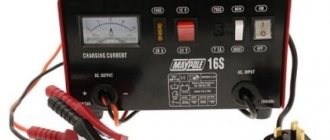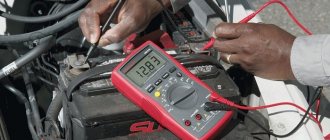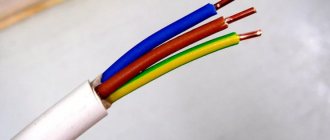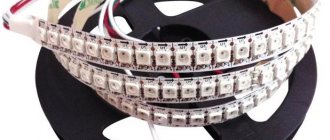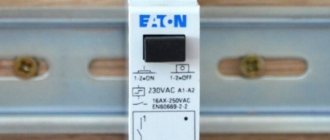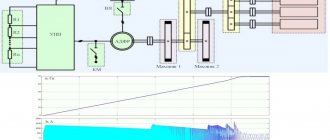The reliability of any electrical equipment directly depends on the condition of the electrical contacts of the equipment. Exposure to moisture, high temperature and other aggressive environments contributes to the destruction of components, causing current leakage, compromising the integrity of connections, which leads to device failure. To achieve stable operation of electrical equipment, it is necessary to prevent water and chemical elements from entering the contacts of the electrical circuit using special lubricants.
Description
Lubricants for electrical contacts are substances that can protect electrical components of various equipment from any external influences, prevent oxidation and corrosion, and also reduce wear of metal, rubber and plastic equipment components.
Any contacts heat up during operation. The temperature level depends on the amount of current passing through the circuit. In the case of a significant increase in temperature, surfaces may mate, and when exposed to various environmental factors, corrosion will form. All this leads to disruption of contact insulation and equipment breakdowns in the future.
In addition, sudden temperature changes contribute to the formation of condensation on the surface of electrically conductive elements in the form of a mixture of moisture, acids, alkalis, salts and other aggressive substances. As a result of the reaction with the conductors, an oxide film is formed, which contributes to the destruction of contacts and leads to a short circuit. These factors also pose a danger to both equipment and people working on the equipment or in its immediate vicinity. That is why it is important to process electrical components with the specified materials in a timely and regular manner.
How to protect contacts in connectors?
Complete sealing is impractical. Any electrical device must have air flowing through it. Otherwise, condensation will form inside, and corrosion will instantly damage all contacts. The exception is connections that are “tightly” filled with compound.
This way you can protect the circuit board from oxidation; the method is not suitable for car electrical contacts. You will not be able to disconnect the connector. For effective protection, assemblers use electrical insulating lubricants.
Another problem is vibration. The spring counterparts of the knife contacts (the so-called “mothers”) weaken over time. Due to constant shaking (this is normal operation in a car), the connection may be lost or become unreliable.
The so-called “bounce” of contacts appears. The consequences are tantamount to corrosion: sparking, unstable passage of control signals. Automotive electrically conductive contact lubricant helps. With its help, a conductive medium is formed inside each connecting pair.
Scope of application
The compositions are considered universal, since they are used in connections of any industrial equipment, vehicles, etc., where the following electrical contacts are present:
- detachable - bolted and screw;
- one-piece - for welding, soldering, riveting;
- sliding – LATR type transformers, rheostats;
- switching – parts of switching units.
The mixtures are also used for processing electrical dismountable connections, collapsible type contacts, cutting knives, as well as twisted or crimped assemblies. The materials provide sealing and protection of terminal connections of batteries and high-voltage wires of vehicles. They protect the contacts of sensors of plugs, relays, sockets, and guarantee electrical insulation.
When to lubricate battery terminals
It is necessary to smear the battery terminals not when a layer of white oxide has already appeared there, but preferably before installing the battery or at least at the very beginning of the oxidation process. On average, terminal maintenance measures are required every two years. On modern maintenance-free batteries that do not require so much attention, the need to lubricate the terminals may arise after 4 years of operation. Although, by and large, it all depends on environmental conditions, the condition of the electrical wiring and battery. Since damage to the terminals, poor contact, overcharging from the generator, violation of the seal of the housing and the ingress of technical fluids only contribute to the formation of plaque.
If the terminals, after cleaning, are soon quickly covered with a new portion of “white salt”, this may indicate either that cracks have formed around the terminal, or that overcharging is in progress. Lubrication will not help in this case.
How to understand that the oxidation process has already begun
In order to check whether the oxidation process has already begun at the terminals, you will need to prepare a 10 percent soda solution. Add to 200 ml. container with plain water, one and a half to two tablespoons of soda, stir and moisten the terminal with it. If oxidation has begun, the solution will neutralize the remaining electrolyte. The process will be accompanied by the release of heat and boiling. So, it's time to put our advice into practice.
Oxidized car battery terminal
But an indirect sign of an ongoing oxidation process is:
- reduction of the on-board network voltage level when starting the engine;
- increased battery self-discharge.
So, if you notice these problems, then to eliminate them you will definitely have to clean and lubricate the battery terminals. But for this there is a certain sequence, rules and tools.
Varieties
All means for electrical contacts are conventionally divided into two groups: conductors and dielectrics. The compositions of the first group do not interfere with the flow of current. They increase electrical conductivity and reduce circuit resistance. The thickeners contained in the mixture give it a matrix structure, so the substance does not spread. The cells contain particles of conductive material, which contribute to increased reliability of electrical systems and anti-corrosion protection, and reduce costs for equipment maintenance.
Mixtures of the second group have electrical insulating characteristics, i.e. They do not conduct current, so they cannot be used in places where contacts are in open contact. Substances are used to treat connections to form a protective layer that prevents current leakage and the entry of water, alkalis, acids and other elements into the unit that contaminate and destroy contacts. Lubricants are typically used to service metal, rubber and plastic parts, where they stabilize voltage and prevent short circuits.
Litol
Since Soviet times, thick non-conductive lubricants have been used as the main means of protecting against corrosion:
Currently, lithol continues to be relevant for protecting battery terminals due to its greatest efficiency. This fuel and lubricant has good penetrating properties, covering the area of metal surfaces of the contact zone with an insulating layer.
With natural wear and temperature changes, the physical state and qualities of lithol change and it hardens. Therefore, during the implementation of routine measures for cleaning the contacts (which are required twice a year), the remnants of the old lubricant are completely removed, after which a fresh one is applied.
Composition and capacity
The basis of most types of lubricants is silicone oil (methyl silicone, acid-resistant petroleum jelly, etc.), thickened with inorganic components and enhanced with additives, conductive or non-conductive, depending on the purpose of the mixture.
Many types of substances are produced in special plastic dispensers. The narrow flexible nose of the dispenser makes it easy to apply the mixture to the contacts, even if they are located in hard-to-reach areas of the equipment. In addition, the products are sold in the form of an aerosol, as well as in small, medium and large volume containers. For transporting materials, the most practical option is collapsible blister packaging.
Advice from an experienced car owner
Some cars have poorly designed batteries.
Their peculiarity is the presence of a personal lid for each jar, which is why dust and dirt accumulate in these areas.
There are several such traffic jams, so the amount of garbage increases several times.
To protect against contamination, you can make a cap for each of the terminals, made of felt material and then impregnated with oil.
The second option is to make a general covering that looks like an anther. For such purposes, it is allowed to use a piece of linoleum or a rubber mat (for example, from the “classics”).
All that is required is to cut the product to the required size and secure it on top.
Characteristics
- thermal and frost resistance – pour point not lower than -57˚С, maximum operating temperature – 400˚С;
- not susceptible to leaching, alkaline and acidic compounds;
- anti-corrosion properties;
- protection of nodes from short circuit:
- insulation and sealing of conductive components;
- compatibility with elastomers and plastics;
- non-toxic;
- minimal volatility;
- increasing the electrical properties of the treated area.
Where to lubricate, outside or inside
The lubricant should protect the battery terminals from oxidation while maintaining the transmission of current through the contact surfaces. Some copper-based products are applied to the pins before connecting the battery to the vehicle's on-board network.
Battery terminal lubrication
It is recommended to pre-clean the surface mechanically, install the wire terminal blocks, and then treat the surfaces with a protective lubricant. Some protective preparations contain dielectrics; getting the substance between contact surfaces impairs the conductivity of electric current.
TOP 5 lubricants
The best lubricants used for processing electrical contacts are from well-known manufacturers.
Efele SG-383
A universal lubricant designed for servicing standard and high-voltage industrial equipment for any purpose, protecting electrical connections and high-voltage components of vehicles. Used in detachable, permanent, terminal and other electrical circuits. The substance is suitable for plastic surfaces and elastomers, so it can be used to service plugs, relays, sensors, sockets and other parts made from plastic and rubber. The mixture is effective at temperatures from -40 to +160˚С, is not washed off with water, weakly acidic solutions and alkalis, and protects electrical contacts from corrosion. After application, it does not dry out and retains its working properties throughout the entire service life of the equipment.
Molykote 111
Molykote 111 is a thermo-, frost- and chemically resistant silicone compound intended for processing, sealing and insulating contacts. Can be used in vacuum units and drinking water supply systems. The material is not washed off by liquid and does not lose performance under the influence of chemical compounds, negative and high temperatures. It has anti-corrosion properties and is compatible with most types of plastics. The scope of application of the lubricant is wide, since it also has excellent dielectric, sealing and protective characteristics and is not limited only to electrical contacts.
Weicon Contact Spray
Weicon Contact Spray is used to maintain and protect electrical components of various equipment. Effectively removes layers of iron, oxides and contaminants of any type, and also removes moisture. The composition does not conduct current and leaves no traces during use. Heat resistance – from -17 to +120 ˚С.
Dow Corning 4
One of the first universal materials to go into wide production. The substance has high dielectric properties and arc resistance, which makes it an effective means for electrical insulation. The composition is effectively used in vehicle ignition systems, detachable connections of electrical circuits, etc. Due to its high lubricating and sealing properties, the lubricant is used when servicing valves and seals made of plastic and rubber. The mixture has food approval, so it can be used in food production equipment.
Why lubricate?
There are several reasons here, but initially this is one reason, so:
- In order to improve the electrical contact of the circuit, there are lubricants that actually improve the transmission properties of electricity
- Perhaps the most important reason is its PROTECTIVE PROPERTIES. The thing is that lead (terminals are also made from it) tends to oxidize. Especially under the influence of the environment. Another disadvantage is that on old cars the terminals were made of copper, and the contacts were made of lead; various metals developed oxidation over time. Well, if you take old batteries that were serviced (made using antipyretic technology), then their electrolyte often boiled out of the cans, and quite violently. The fumes came along with some of the sulfuric acid, which could also get on the contacts. Here you go - OXIDATION AGAIN.
By the way, many auto electricians recommend treating the mass of the body with such protective compounds; it can also oxidize over time. Actually, so that nothing oxidizes these contacts and lubricates the terminals, if this is not 100% protection, then at least decay products do not appear for quite a long time.
Methods and means for cleaning terminals from oxides and dirt
Some car enthusiasts believe that the terminals oxidize only on old-style batteries (maintained type); maintenance-free batteries are free from such unpleasant problems. In fact, oxides can also form on modern batteries, only the oxidation does not occur as intensely and noticeably, and plaque appears quite quickly around loose terminal pins. If there are several methods for cleaning terminal connections:
- using fine sandpaper;
- wiping with a rag moistened with plenty of water;
- using a baking soda solution.
It is highly undesirable to use a metal brush: hard, thick rods erase soft lead, causing deep scratches. Plain water or a soda solution effectively wipes off plaque; only the rag must be moistened generously, and the procedure must be repeated several times.
